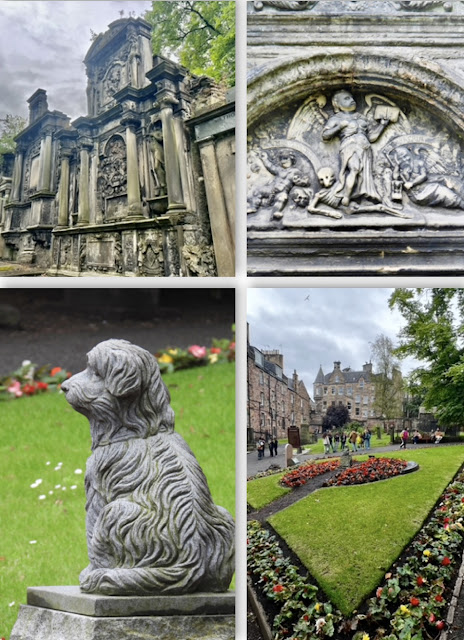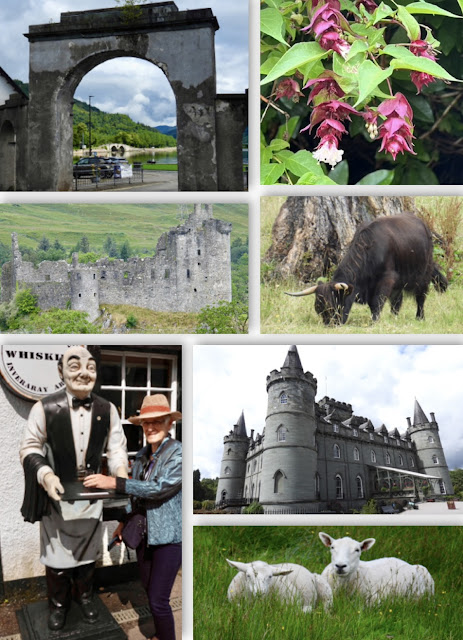We have been touring the British Isles and Ireland and are now hanging out in London for a month. More on that later. We thought of the trip as touring the British Isles. But now we know the Irish definitely do not think of themselves as part of the British Isles. In fact, I'd say there is mixed sentiment re the British connection in Scotland and Ireland.
It was our first time in Scotland, Ireland, Wales and Cornwall. This is the trip we had planned for 2020 that got postponed by the pandemic. It returned to the top of our travel priorities after 4 years and four other travel experiences (Greece, Ecuador & Panama, Portugal, Italy & France, Thailand & India).
This is our third trip arranged through the Zicasso Service. Our trip, all 51 days, was planned, booked and managed by BellaRoma. Thank god for services like theirs. It was hard enough to review the proposals. I can't imagine planning this on our own.
We had a total of 12 weeks of exploration and leisure.
- Scotland (Edinburgh, Inverness, Oban, Glasgow)
- Northern Ireland (Belfast, Derry)
- Ireland (Lough Eske Castle, Galway, Killarney, Dublin)
- Wales (Conwy, St Davids, Llanhamlach / Brecon Beacons, Cardiff)
- Cornwall (Padstow, St Ives)
- London (the city and possibly several day trips or 1 night stands)
After this tour and our past explorations of London, York, The Lake District, The Cotswolds, Bath and Portsmouth we will have experienced most of the UK and Ireland.
The map below shows our stops.
We enjoyed 5 days in Edinburgh. It was cold there by our standards. The temperatures ranged from 50F to 64F with some sun and blue sky on our two leisure days. (For reference, these feel like winter temps in San Miguel, but in winter SMA gets way more sun.)
Our first tour took us around the city seeing some Harry Porter landmarks, some historic spots and Edinburgh Castle. St Giles Presbyterian Cathedral, founded 900 years ago, has evolved beautifully. And there are Pipers everywhere.
Along our tour we enjoyed the Writers Museum sign and the Dragon protecting Wardrop's Court Dragon.
We explored Greyfriars Kirkyard Cemetery. (Note: The Greyfriars wear grey robes. Hence the name.) Greyfriars Bobby is a Skye Terrier remembered for spending 14 years guarding the grave of his owner, until his own death in January 1872. Maybe an urban legend, but a great story.

Edinburgh Castle is more museum than palace. Aside from its silhouette and views over Edinburgh there is not much to see. Most notable, Mons Meg, the world's most famous medieval gun, is on display at the Castle. She was the ultimate weapon of mass destruction in her day. Weighing six tons, she could fire a 330 lb stone ball up to two miles. There was no detail re the accuracy of the shot.
Another day we were off to St Andrews with a driver (James) in a Tesla. Teslas aren't common here so that stood out. We stopped to see the Firth of Forth bridges. There are 3 bridges over the Firth of Forth. (A firth is a narrow sea inlet.) One railway bridge (looks like 3 separate bridges) and two road bridges. The red railway bridge offers some interesting perspectives.
Along the way we stopped at a couple coastal villages on the "East Neuk". (Neuk means nook.) In St Monans we appreciated its church and in Crail we explored the town walls and the cove with its heron and lobster traps. (Yep they have Atlantic lobster here...but seem to roast lobsters rather than steam them. I much prefer steamed as done in Maine!)
We even played a round of golf in St Andrews! Oh, did I mention it was at the St Andrews Ladies Putting Club, better known as the Himalayas. Our scores were not impressive. We will leave it at that. We had a great lunch at the nearby St Andrews Seafood Restaurant.
We toured the ruins of the St Andrews Cathedral which fell into disuse in the 16C. Then we shopped along the Main Street. As is frequently the case in small touristy villages, we enjoyed the selection at the hardware store.
On our first leisure day we wandered around town to take advantage of the sunshine. We checked out Dean Village (a charming neighborhood), the periphery of the Botanic Garden (a nice walk but not much of a garden experience. The clock and ring necked dove were notable.).
Along the way we enjoyed the cliffside view of the castle and the beautiful Scott Monument. Dedicated to Sir Walter Scott, it is one of the largest monuments to a writer anywhere in the world. It is captivating, like the Parroquia in San Miguel.
In the evening we visited Calton Hill, considered by some (us notably) as home to Edinburgh's want-to-be Parthenon. There are several monuments, an art museum, a large park and great views over Edinburgh,
Another day we visited Stirling (north west of Edinburgh) seeing the 12C Stirling Castle (peaked in importance in the 16C, photo is bottom left). We made a quick stop to see Llinlithgow Palace, the birthplace of Mary Queen of Scots (the church there has a modern sculpture on top). And there is a lovely statue of Mary who lived a sad life. She reigned over Scotland from 6-days old until 27 years old. Then she was imprisoned for 19 years by her cousin Elizabeth I of England who then had her executed.
At Stirling Castle we presided over a nearly empty room, enjoyed a chorale performance and viewed the the gardens where only the raised beds remain. Outside of town we stopped at the David Stirling Memorial. He was the Father of the Special Air Service that was formed as an elite tactical unit during World War II.
On our return to Edinburgh we stopped in Falkirk to see the Falkirk Wheel. A one of a kind device that replaces a series of 11 locks that were needed to connect between the Forth & Clyde Canal to the higher Union Canal. It is kind of a ferris wheel that can accommodate two canal boats being raised with the weight being offset by two others (or a gondola full of water) being lowered. The process from positioning your boat, getting into the gondolas to be lifted or lowered and getting out onto the new canal takes about 15 to 20 minutes. Accessing a lock waiting for it to fill or empty and exiting conservatively takes 20 minutes. While 11 locks would take more than 3.5 hours and way more space, Ain’t technology wonderful!
Our final stop was at the Kelpie Horse Statues (apparently installed to help make Falkirk a more desirable place to visit). They are extremely well done. Captivating.
Our second leisure day was reserved for museums…in case of rain. We did get a heavy mist during our snack break but otherwise is was partially sunny and quite comfortable.
The Scottish National Gallery is now one of Pat's favorite art museums. It has a great but small collection of Old Masters, including some great Flemish works. Flemish Art is one of Pat's favs for the delicate details. There is also a great collection of Impressionism works. Impressionism is Pat's other favorite genre for the amount of detail implied by a few strokes. She asked herself how could it be that she loves both. Then she realized, it is the skill required in each case. The exquisite detail of the Flemish works providing the amazing expressions. And the lack of explicit detail in Impressionism suggesting the same amazing expressions.
The National Museum is also very fine (and large) with some great collections. The Cultural and Design sections were great. As were the collection on British Territories. And in the technology collection is Dolly the cloned sheep.
We wrapped up our visit at Aizle Restaurant which features a tasting menu with fresh, colorful dishes made up of the latest seasonal harvest and given the occasional creative or Japanese twist”. Every element was amazing!














































